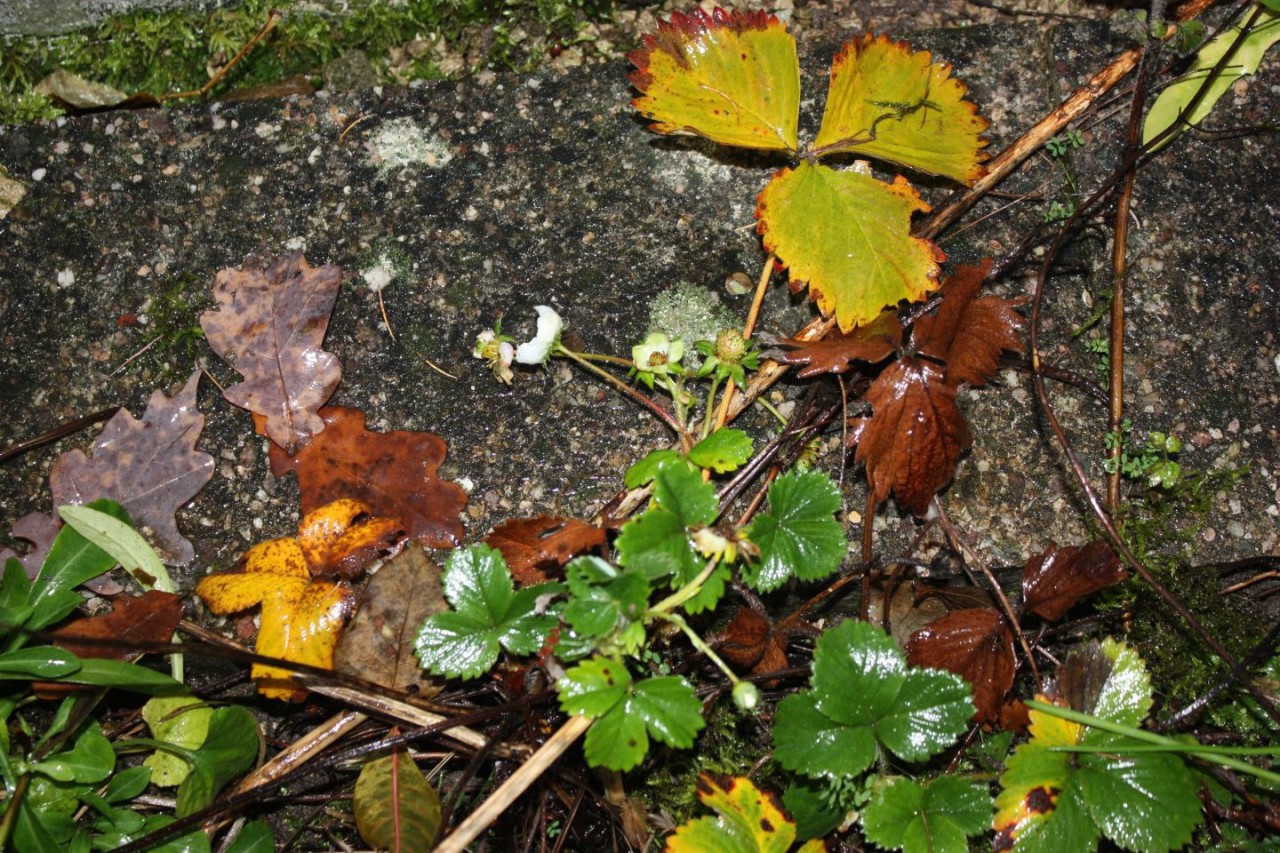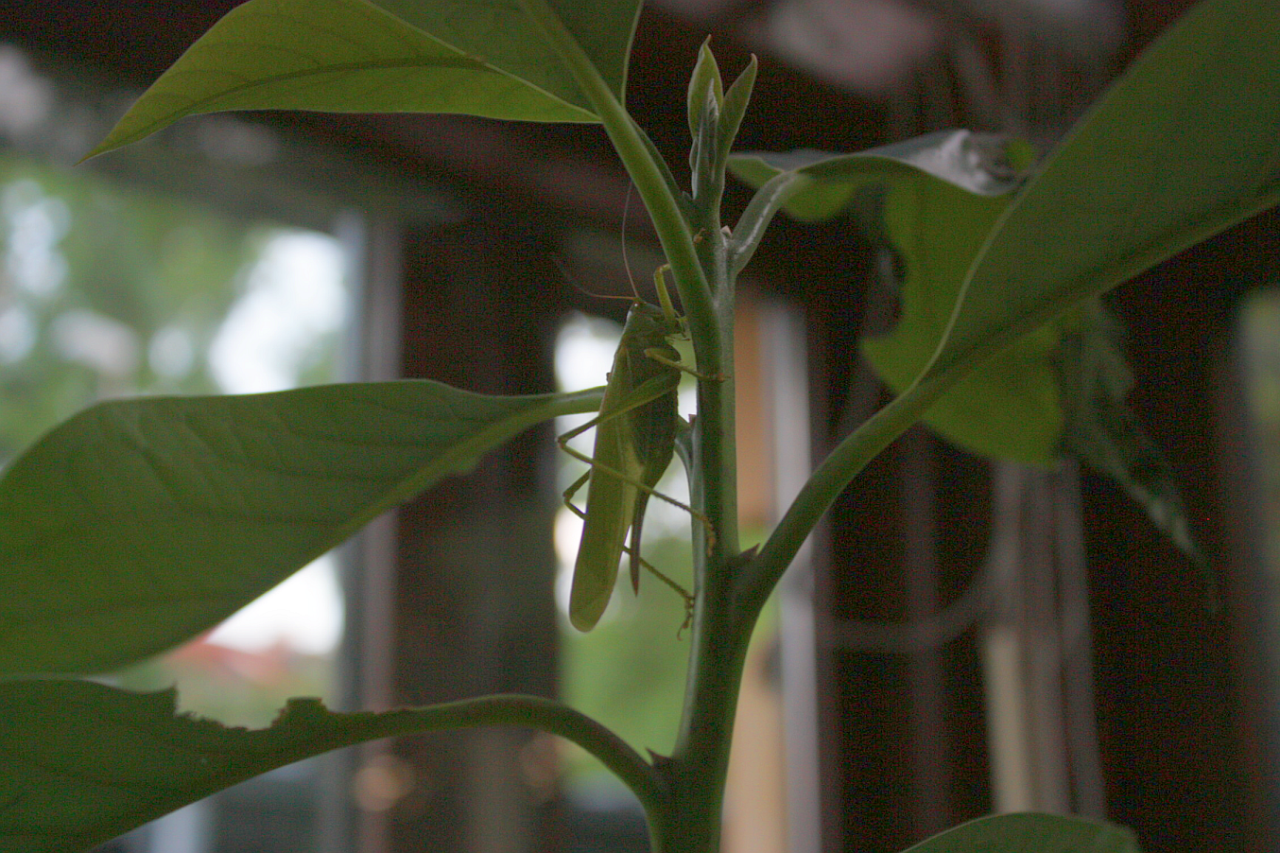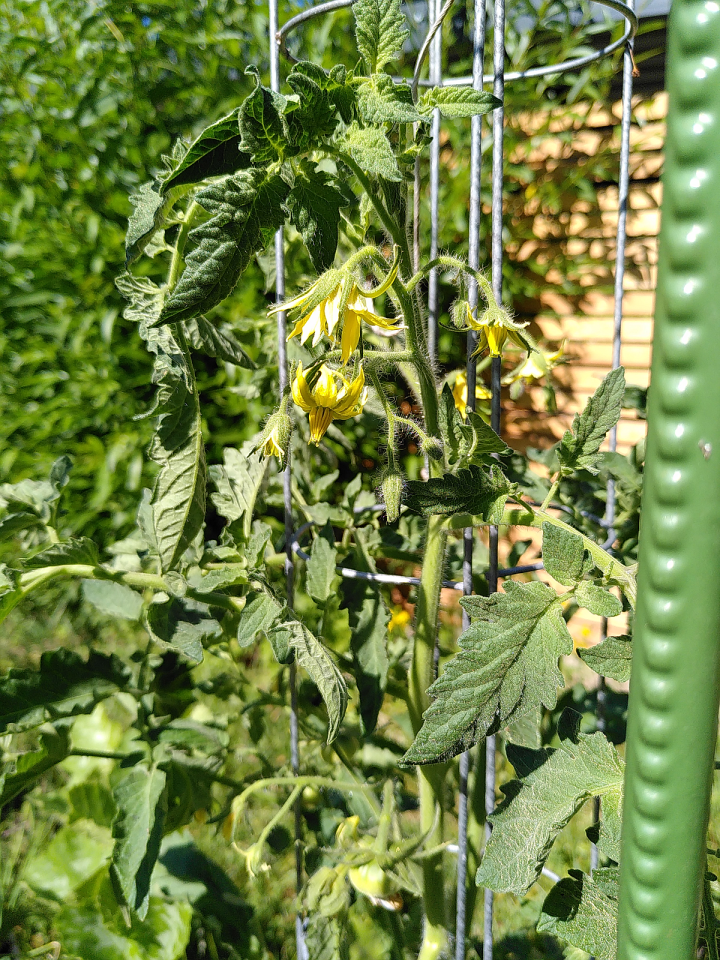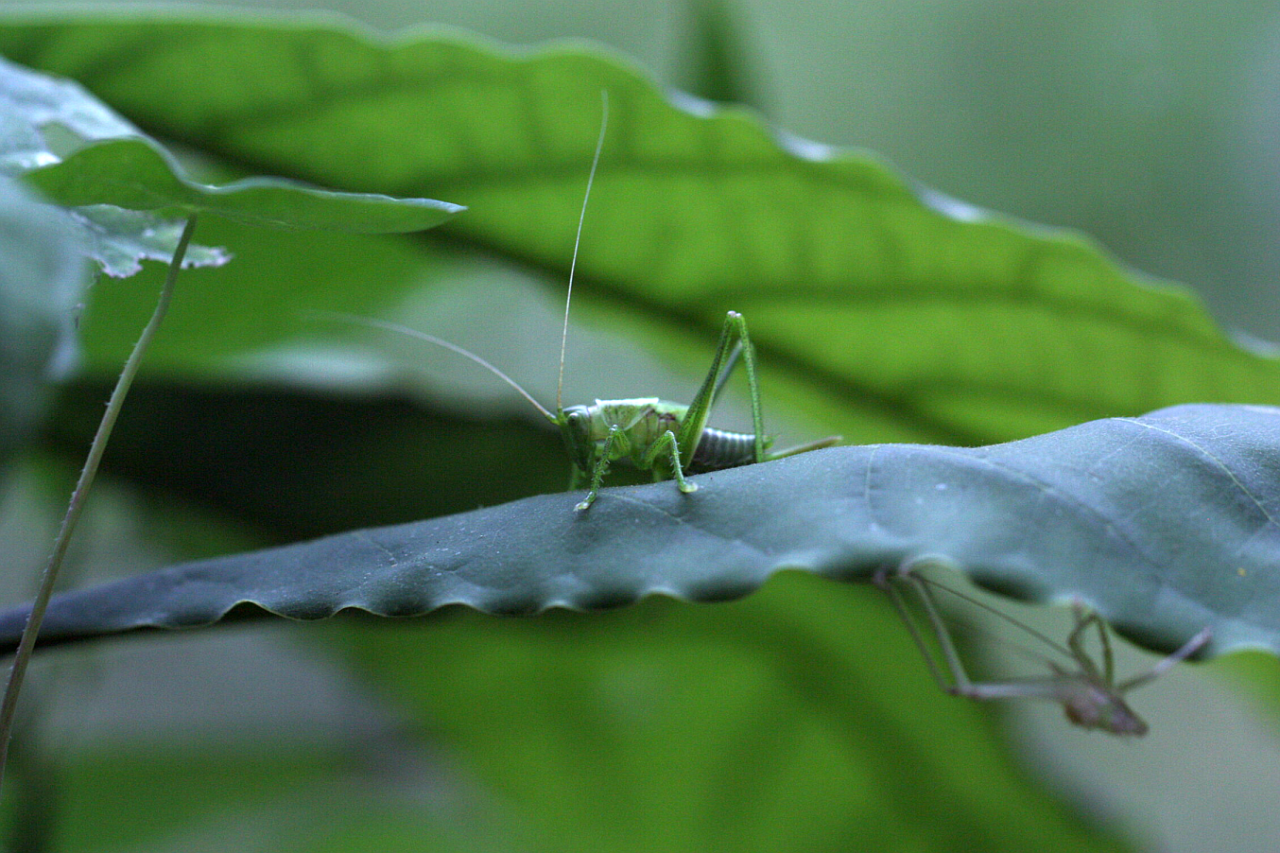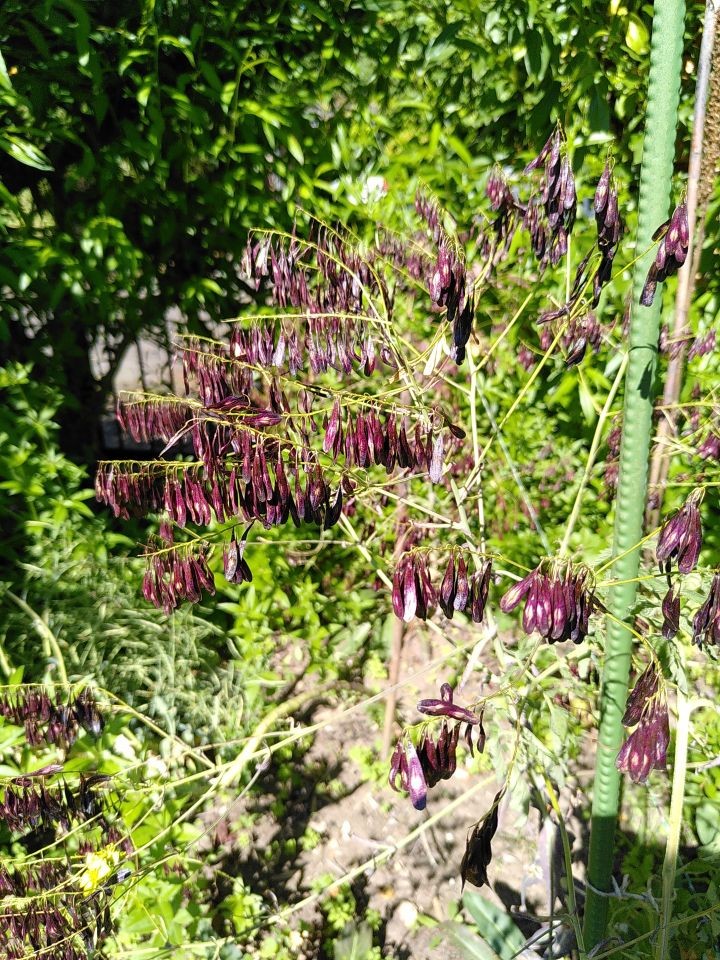This year has been a weird one, garden-wise. It was (again) a very dry summer, which meant that a lot of the things that usually bloom were not doing so. That included our wild thyme growing in the area we lovingly call "lawn", though the amount of grass growing there is, let's say, not too high.
Consequently, when the autumn and late autumn were unseasonally warm and a bit more wet than the summer, quite a few of them had a late bloom, literally. That included our wild thyme, which is not entirely surprising.
It also included two calendula plants, but since they are sometimes flowering until November in any way, that was also not entirely surprising.
What really shocked me a bit, though, was this:
Yes, those are strawberry plants. Yes, that is even a small strawberry fruit doing its best to grow.
It's weird, and it is a little bit scary, if you ask me. Looking at how things have gone weird and wonky, time-wise, really makes me wonder that anyone can still be doubting climate change. Folks. Strawberries flowering outside in start of December. There should be no more doubt...




